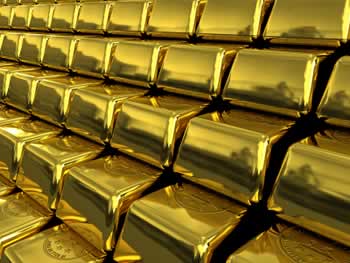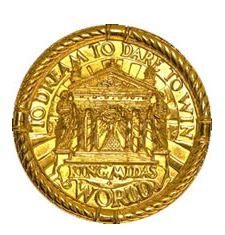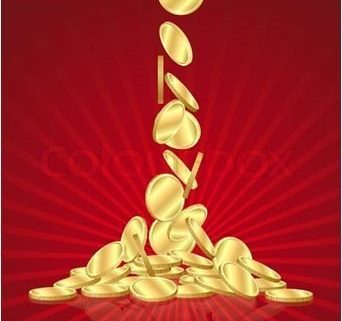We sit here in the calm before the storm awaiting the Federal Reserve?s decision to taper a little, a lot, or not at all. Every asset class on the planet is in a holding pattern until then. So I?ll take this opportunity to review the current state of play in gold (GLD).
Since it peaked in the summer of 2011, the barbarous relic has been beaten like the proverbial red headed stepchild, dragging silver (SLV) down with it. It now appears to be facing a perfect storm.
If the Fed doesn?t taper today, it will shortly. That will bring us rising interest rates, raising the opportunist cost of own non-interest bearing assets for the first time in six years. Gold is at the top of that list.
Gold has traditionally been sought after as an inflation hedge. But with jobs growth weak, wages stagnant, and much work still being outsourced abroad, rapid price increases are nowhere on the horizon. Unless, of course, you drive a gas-guzzler, which I don?t.
The biggest buyers of gold in the world, the Indians, have seen their purchasing power drop by half, thanks to the collapse of the rupee against the US dollar. The government there is now threatening to increase taxes once again in order to staunch precious capital outflows. That?s why Indian gold imports fell by a stunning 95% last month to a mere 2 ? metric tones.
You can also blame the China slowdown for declining interest in the yellow metal, which is now in its fourth year of falling economic growth. Chart gold against the Shanghai index, and the similarity is striking.
The brief bid gold caught this summer over war fears in Syria was worth an impressive $250 rise. But the diplomats then got involved and hostilities were taken off the table, or at least delayed. That caused gold to roll over like the Bismarck.
Can?t the metal catch a break?
With conditions this grim, you?d think the price of gold was going to zero. It?s not. While now one was looking, the average price of gold production has soared from $5 in 1920 to $1,300 today. Over the last 100 years, the price of producing gold has risen four times faster than the underlying metal. It?s almost as if the gold mining industry is the only one in the world which sees real inflation, which has seen costs soar at a 15% annual rate for the past five years.
This is a function of what I call ?peak gold.? They?re not making it anymore. Miners are increasingly being driven to higher risk, more expensive parts of the world to find the stuff. You know those tires on heavy dump trucks? They now cost $200,000 and buyers face a three-year waiting list to buy one. Barrick Gold (ABX) isn?t mining at 15,000 feet in the Andes, where freezing water is a major problem, because they like the fresh air.
What this means is that when the spot price of gold falls below the cost of production, miners will simply shout down their most marginal facilities, drying up supply. They can still operate, and older mines carry costs that go all the way down to $600. No one is going to want to supply the sparkly stuff at a loss. That should prevent gold from falling dramatically from here.
I am constantly barraged with emails from gold bugs who passionately argue that their beloved metal is trading at a tiny fraction of its true value, and that the barbaric relic is really worth $5,000, $10,000, or even $50,000 an ounce (GLD). They claim the move in the yellow metal we are seeing is only the beginning of a 30 fold rise in prices similar to what we saw from 1972 to 1979, when it leapt from $32 to $950.
So when the chart below popped up in my in-box showing the gold backing of the US monetary base, I felt obligated to pass it on to you to illustrate one of the intellectual arguments these people are using. To match the 1936 monetary value peak, when the monetary base was collapsing, and the double top in 1979 when gold futures first tickled $950, this precious metal has to increase in value by eight times, or to $9,600 an ounce.
I am long term bullish on gold, other precious metals, and virtually all commodities for that matter. But I am not that bullish. It makes my own $2,300 prediction positively wimp-like by comparison. The seven year spike up in prices we saw in the seventies, which found me in a very long line in Johannesburg, South Africa to unload my own krugerrands in 1979, was triggered by a number of one off events that will never be repeated.
Some 40 years of demand was unleashed when Richard Nixon took the US off the gold standard and decriminalized private ownership in 1972. Inflation then peaked around 20%. Newly enriched sellers of oil had a strong historical affinity with gold. South Africa, the world?s largest gold producer, was then a boycotted international pariah and teetering on the edge of disaster. We are nowhere near the same geopolitical neighborhood today, and hence my more subdued forecast. But then again, I could be wrong.
In the end, gold may have to wait for a return of inflation to resume its push to new highs. The last bear market in gold lasted 18 years, from 1980 to 1998, so don?t hold your breath.
What should we look for? When your friends start getting surprise, out of the blue pay increases, the largest component of the inflation calculation. That is happening now in the technology and the new US oil fields, but nowhere else. It could be a long wait, possibly into the 2020?s, until the wage hikes spread elsewhere.
You may have noticed that I have not been doing much trading in gold or the other precious metals lately, except from the short side. That is because they are still working off a multiyear overbought condition. Given some time, and a solid floor under prices, and I?ll be back there in a heartbeat.
You?ll be the first to know when that happens.




















































